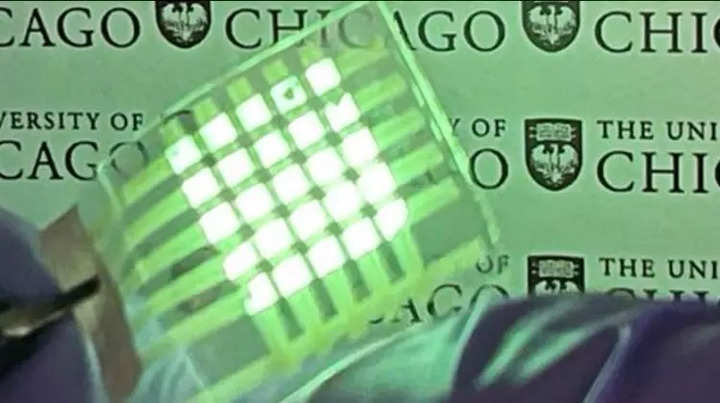
Engineers in the United States have recently created a flexible OLED display that can bend in half and stretch to more than twice its original length without losing its fluorescent pattern. This groundbreaking technology has a wide range of applications, from wearable electronics and health sensors to foldable computer screens.
The displays on most high-end smartphones and a growing number of televisions use OLED (organic light-emitting diode) technology, which sandwiches small organic molecules between conductors. When an electrical current is applied, these small molecules emit a bright light. While this technology is highly energy-efficient and has sharp picture quality, the molecular building blocks of OLEDs have tight chemical bonds and stiff structures, making them difficult to stretch or bend.
With the goal of developing a material that could maintain the electroluminescence of OLED while being stretchable, the team, led by Sihong Wang, assistant professor of molecular engineering at the Pritzker School of Molecular Engineering (PME) at the University of Chicago, used long polymers with bendable molecular chains to create prototypes with new flexible electroluminescent polymers. These materials were found to be flexible, stretchable, bright, durable, and energy-efficient, just as the model had predicted.
Their design also included the use of “thermally activated delayed fluorescence” which allows the materials to convert electrical energy into light in a highly efficient way. These bendable materials that emit light can be integrated into wearable sensors that require light, such as sensors measuring blood oxygenation and heart rate, which typically use light to sense blood flow through blood vessels.
“My dream is to make all the essential components for a full system of wearable electronics, from sensing to processing to displaying information,” said Wang.
This new technology is a major breakthrough for the field of wearable technology and has the potential to revolutionize the way we use and interact with electronics.
